Analysis of Leaked Crude Oil in a Mountainous Area
Abstract
:1. Introduction
2. Computational Approach
2.1. Computational Domain
2.2. Grid Construction
2.3. Simulation Settings
3. Simulation Results and Discussion
3.1. Leakage in the Valley
3.2. Leakage at the Ridge
3.3. General Algorithm for Path Prediction
- It assumes that the same amount of water is applied to each elevation data point.
- It considers that all of the water at a certain point must flow to a neighbor cell with the lowest elevation so that the water volume in the whole Digital Elevation Mode (DEM) will be redistributed according to the difference of elevation.
- The different water volume will be accumulated in each cell, and the valley points can be identified by setting the threshold value of catchment volume artificially.
3.3.1. Fill Pits
3.3.2. Compute Flow Directions
3.3.3. Compute Flow Accumulations
4. Conclusions
Author Contributions
Funding
Informed Consent Statement
Conflicts of Interest
Nomenclature
| ρoil | density of crude oil, M/L3 kg/m3 |
| ρair | density of air, M/L3, kg/m3 |
| μoil | viscosity of crude oil, M/L·t, kg/m·s |
| μair | viscosity of air, M/L·t, kg/m·s |
| z0 | roughness length, L, m |
| KS | Roughness height, L, m |
| t | time of crude oil leakage, t, s |
| v | initial leakage velocity, L/t, m/s |
| Gx,y | 3 × 3 dimensional slope gradient matrix |
| Nx,y | neighboring cell of the cell (x, y) |
| Lx,y | distance between central cell and neighboring cells |
References
- Liang, S. China-myanmar energy pipelines important for their geo-strategic position. China Oil Gas 2013, 2, 13–15. [Google Scholar]
- Mitra-Thakur, S. China receives first natural gas from Myanmar pipeline. Eng. Technol. 2013, 8, 16. [Google Scholar]
- Anonymous. CNPC to build and operate China-Myanmar pipeline. Pipeline Gas J. 2010, 237, 14. [Google Scholar]
- Di, B.F.; Chen, N.S.; Cui, P.; Li, Z.L.; He, Y.P.; Gao, Y.C. GIS-based risk analysis of debris flow: An application in Sichuan, southwest China. Int. J. Sediment Res. 2008, 2, 138–148. [Google Scholar] [CrossRef]
- Anbalagan, R.; Singh, B. Landslide hazard and risk assessment mapping of mountainous terrains-a case study from Kumaun Himalaya, India. Eng. Geol. 1996, 43, 237–246. [Google Scholar] [CrossRef]
- Ciriello, V.; Lauriola, I.; Bonvicini, S.; Cozzani, V.; Di Federico, V.; Tartakovsky, D.M. Impact of hydrogeological uncertainty on estimation of environmental risks posed by hydrocarbon transportation networks. Water Resour. Res. 2017, 53, 8686–8697. [Google Scholar] [CrossRef]
- Briscoe, F.; Shaw, P. Spread and evaporation of liquid. Pergamon 1980, 6, 127–140. [Google Scholar] [CrossRef]
- Fay, J.A. The Spread of Oil Slicks on a Calm Sea; Springer: Boston, MA, USA, 1969; pp. 53–63. [Google Scholar]
- Kapias, T.; Griffiths, R.F. Accidental releases of titanium tetrachloride (TiCl4) in the context of major hazards-spill behaviour using reactpool. J. Hazard. Mater. 2005, 119, 41–52. [Google Scholar]
- Kapias, T.; Griffiths, R.F.; Stefanidis, C. Spill behaviour using reactpool: Part II. Results for accidental releases of silicon tetrachloride (SiCl(4)). J. Hazard. Mater. 2001, 81, 209–222. [Google Scholar]
- Kapias, T.; Griffiths, R.F. Spill behaviour using reactpool: Part III. Results for accidental releases of phosphorus trichloride (PCl(3)) and oxychloride (POCl(3)) and general discussion. J. Hazard. Mater. 2001, 81, 223–249. [Google Scholar] [CrossRef]
- Webber, D.M. On models of spreading pools. J. Loss Prev. Process Ind. 2012, 25, 923–926. [Google Scholar] [CrossRef]
- Witlox, H.W.M.; Maria, F.; Mike, H.; Oke, A.; Stene, J.; Xu, Y. Verification and validation of phast consequence models for accidental releases of toxic or flammable chemicals to the atmosphere. J. Loss Prev. Process Ind. 2018, 55, 457–470. [Google Scholar] [CrossRef]
- Wu, G.Z.; Guo, E.Y.; Qi, H.B.; Zhou, Y.M.; Li, D. The Impact Analysis on Crude Oil Phase Change to the Migration of Buried Oil Pipelines Leakage Pollution. Appl. Mech. Mater. 2014, 3547, 675–677. [Google Scholar]
- Ji, X.Y.; Liu, X.Y. Soil Columns’ Experiments by Layers of the Migration of Petroleum Hydrocarbons Contaminants in Soils. Energy Environ. Prot. 2005, 19, 43–45. [Google Scholar]
- He, G.; Lyu, X.; Liao, K.; Li, Y.; Sun, L. A method for fast simulating the liquid seepage-diffusion process coupled with internal flow after leaking from buried pipelines. J. Clean. Prod. 2019, 240, 118167. [Google Scholar] [CrossRef]
- Norouzi, S.; Soleimani, R.; Farahani, M.V.; Rasaei, M.R. Pore-Scale Simulation of Capillary Force Effect in Water-Oil Immiscible Displacement Process in Porous Media. In Proceedings of the 81st EAGE Conference and Exhibition, London, UK, 3–6 June 2019; European Association of Geoscientists & Engineers: Houten, The Netherlands, 2019. [Google Scholar]
- Cavanaugh, T.A.; Siegell, J.H.; Steinberg, K.W. Simulation of vapor emissions from liquid spills. J. Hazard. Mater. 1994, 38, 41–63. [Google Scholar] [CrossRef]
- Tauseef, S.M.; Pandey, S.K.; Abbasi, T.; Abbasi, S.A. An Assessment of the Spread Rates of Accidentally Spilled Flammable Liquids and the Development of a Model to Forecast the Spill Velocity. J. Fail. Anal. Prev. 2019, 19, 1774–1780. [Google Scholar] [CrossRef]
- Benfer, M. Spill and Burning Behavior of Flammable Liquids. Ph.D. Thesis, University of Maryland, College Park, MD, USA, 2010. [Google Scholar]
- Raja, S.; Reddy, T.; Tauseef, S.M.; Abbasi, T.; Abbasi, S.A. Efficacy of existing transient models for spill area forecasting. J. Chem. Health Saf. 2019, 26, 33–37. [Google Scholar]
- Hussein, M.; Jin, M.; Weaver, J.W. Development and verification of a screening model for surface spreading of petroleum. J. Contam. Hydrol. 2002, 57, 281–302. [Google Scholar] [CrossRef]
- Blokker, P.C. Spreading and evaporation of petroleum products on water. In Proceedings of the 4th International Har-Bour Conference, Antwerp, Belgium, 22–27 June 1964; pp. 911–919. [Google Scholar]
- Al-Rabeh, A.H.; Cekirge, H.M.; Gunay, N. A stochastic simulation model of oil spill fate and transport. Appl. Math. Model. 1989, 13, 322–329. [Google Scholar] [CrossRef]
- Karafyllidis, I. A model for the prediction of oil slick movement and spreading using cellular automata. Environ. Int. 1997, 23, 839–850. [Google Scholar] [CrossRef]
- Lehr, W.J.; Overstreet, R. ADIOS-Automated Data Inquiry for oil spills. In Proceedings of the Fifteenth Arctic and Marine oil Spill Program Technical Seminar, Edmonton, AB, Canada, 10–12 June 1992; pp. 31–45. [Google Scholar]
- Geng, X.; De Boufa, L.M.C.; Ozgokmen, T.; King, T.; Lee, K.; Lu, Y.; Zhao, L. Oil droplets transport due to irregular waves: Development of large-scale spreading coefficients. Mar. Pollut. Bull. 2016, 104, 279–289. [Google Scholar] [CrossRef] [PubMed]
- Zheng, Y.P.; Yang, R.; Wang, R.; Yao, H. A new modelling method of CFD real terrain based on contour lines. Yangtze River 2017, 48, 40–45. [Google Scholar]
- Ti, Z.L.; Li, Y.L.; Liao, H.L. Effect of ground surface roughness on wind field over bridge site with a gorge in mountainous area. Eng. Mech. 2017, 34, 73–81. [Google Scholar]
- Hirt, C.W.; Nichols, B.D. Volume of fluid (VOF) method for the dynamics of free boundaries. Acad. Press 1981, 39, 201–225. [Google Scholar] [CrossRef]
- O’Callaghan, J.F.; Mark, D.M. The extraction of drainage networks from digital elevation data. Comput. Vis. Graph. Image Process. 1984, 28, 323–344. [Google Scholar] [CrossRef]
- Martz, L.W.; Jong, E.D. Catch: A fortran program for measuring catchment area from digital elevation models. Comput. Geosci. 1988, 14, 627–640. [Google Scholar] [CrossRef]
- Barnes, R.; Lehman, C.; Mulla, D. Priority-flood: An optimal depression-filling and watershed-labeling algorithm for digital elevation model. Comput. Geosci. 2014, 62, 117–127. [Google Scholar] [CrossRef] [Green Version]
- Cheng, S.; Xi, Z.W.; Cun, J.F.; Huang, Z.; Zhang, X. An integrated algorithm for depression filling and assignment of drainage directions over flat surfaces in digital elevation model. Earth Sci. Inform. 2015, 8, 895–905. [Google Scholar]
- Fairchild, J.; Leymarie, P. Drainage networks from grid digital elevation models. Water Resour. Res. 1991, 27, 709–717. [Google Scholar]
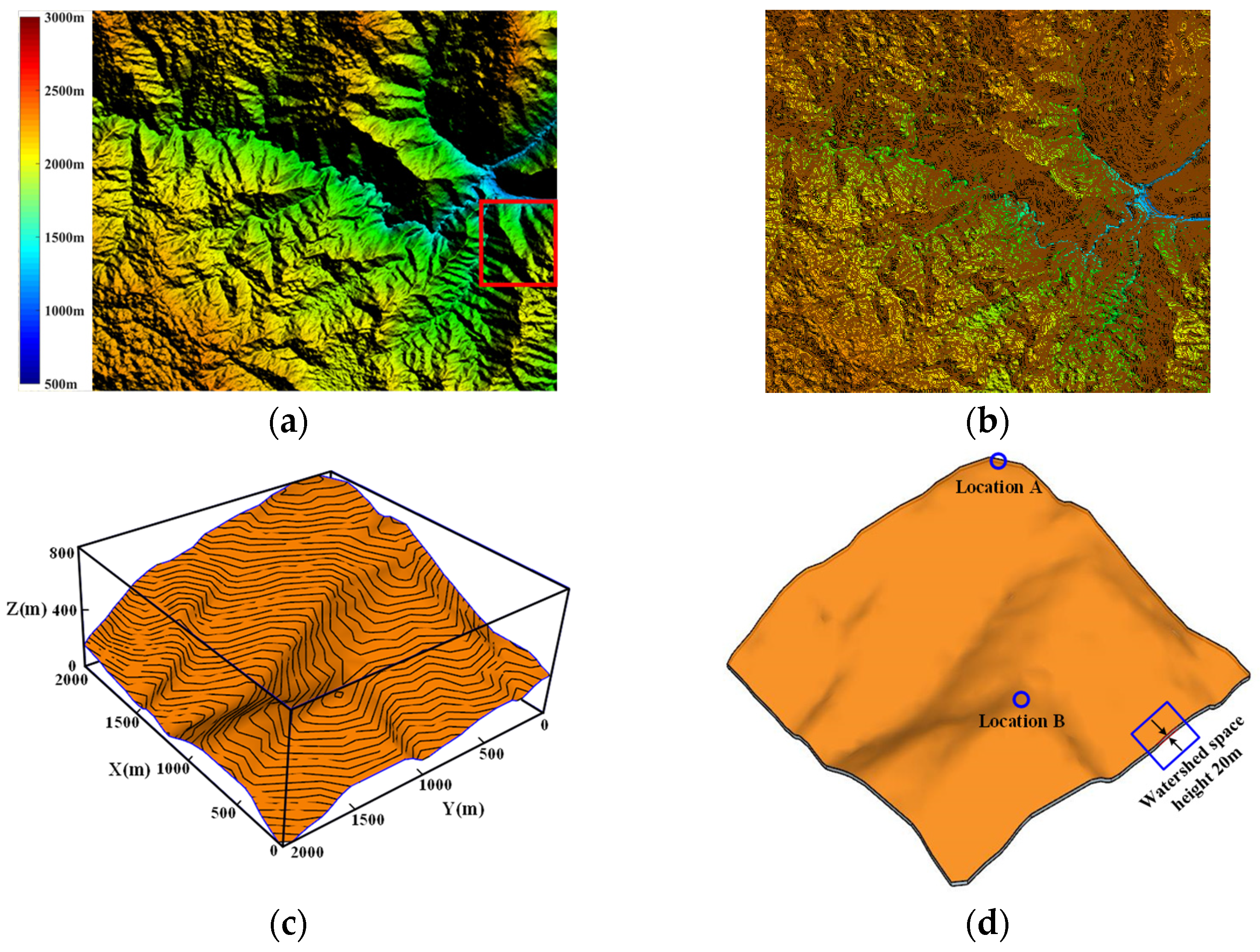

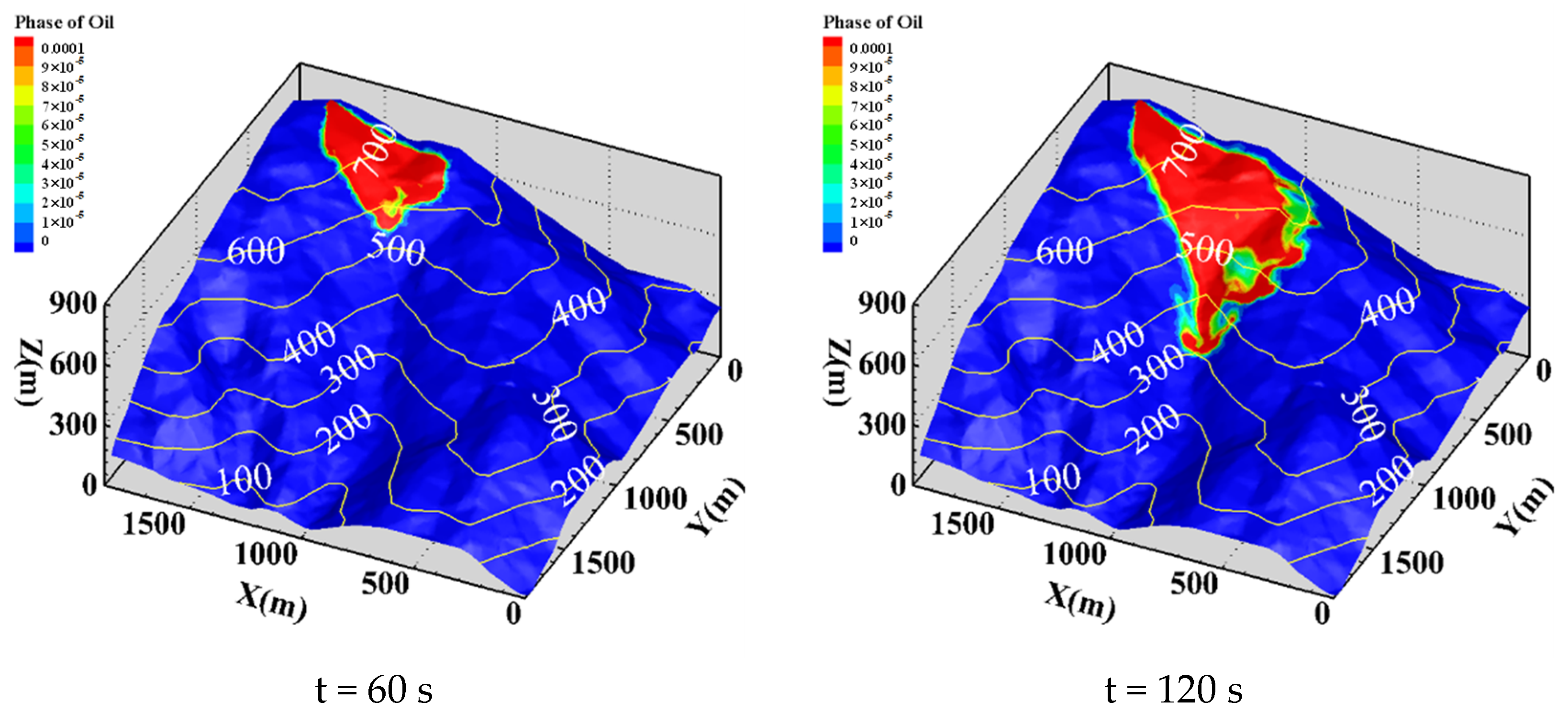

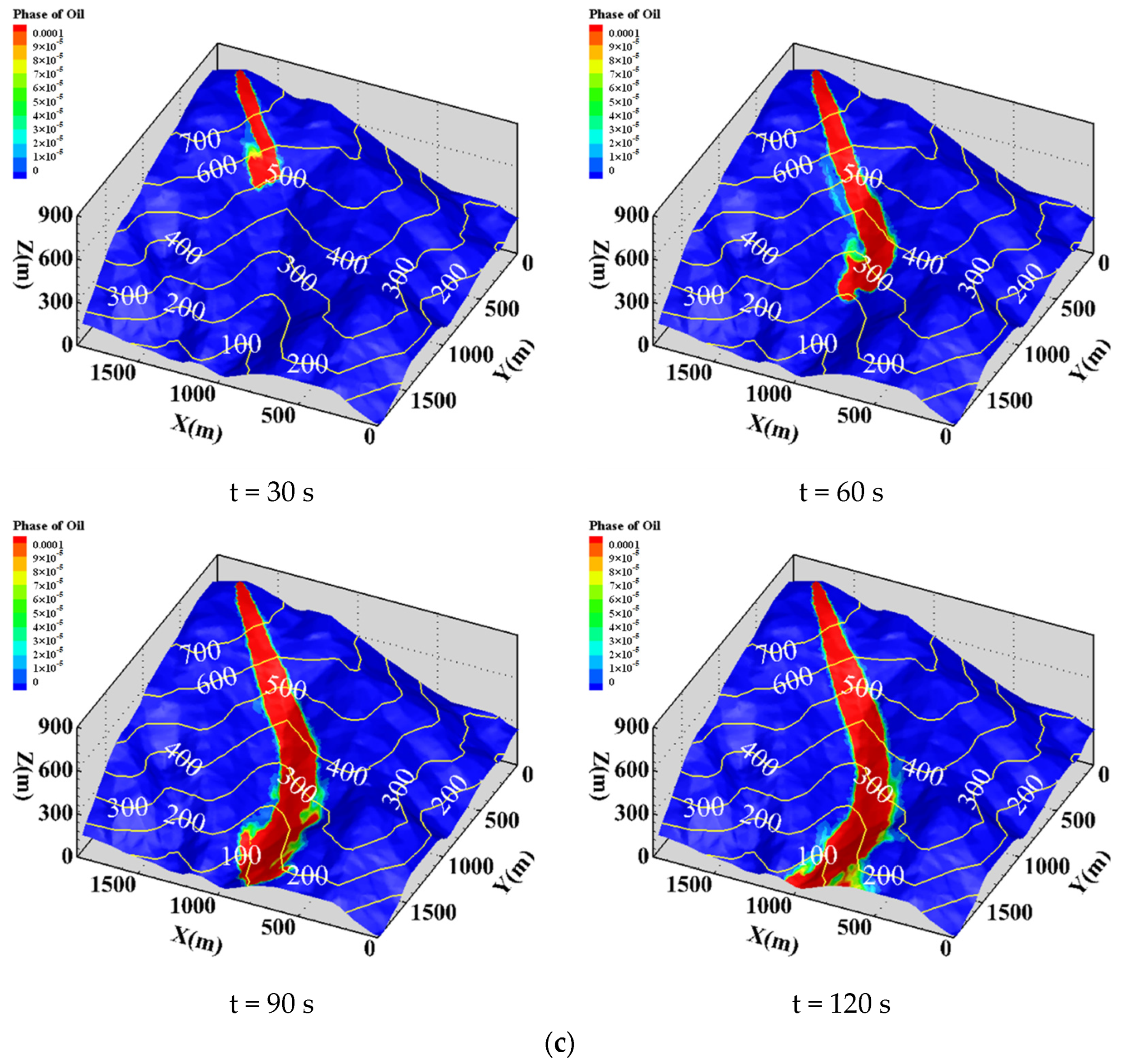
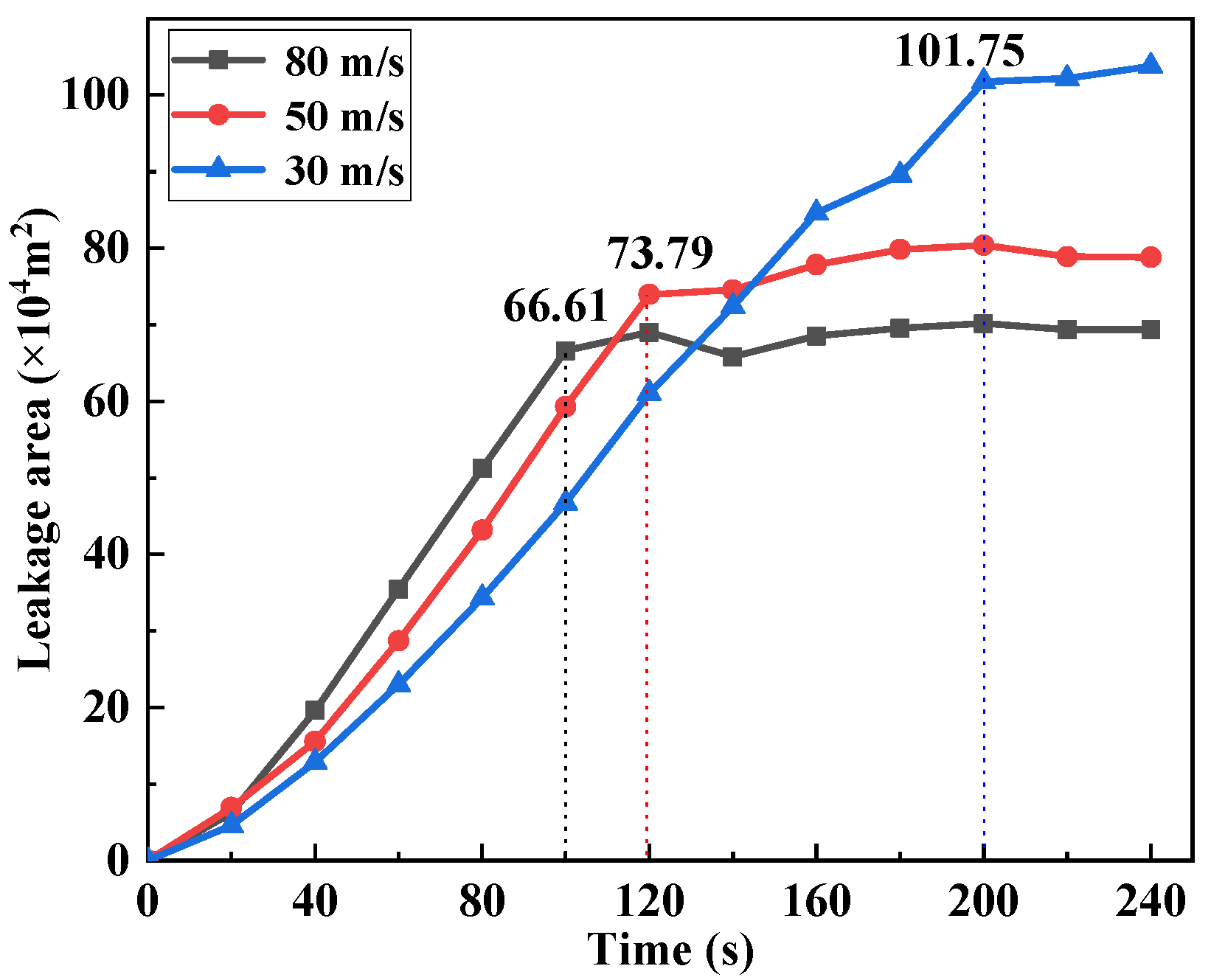
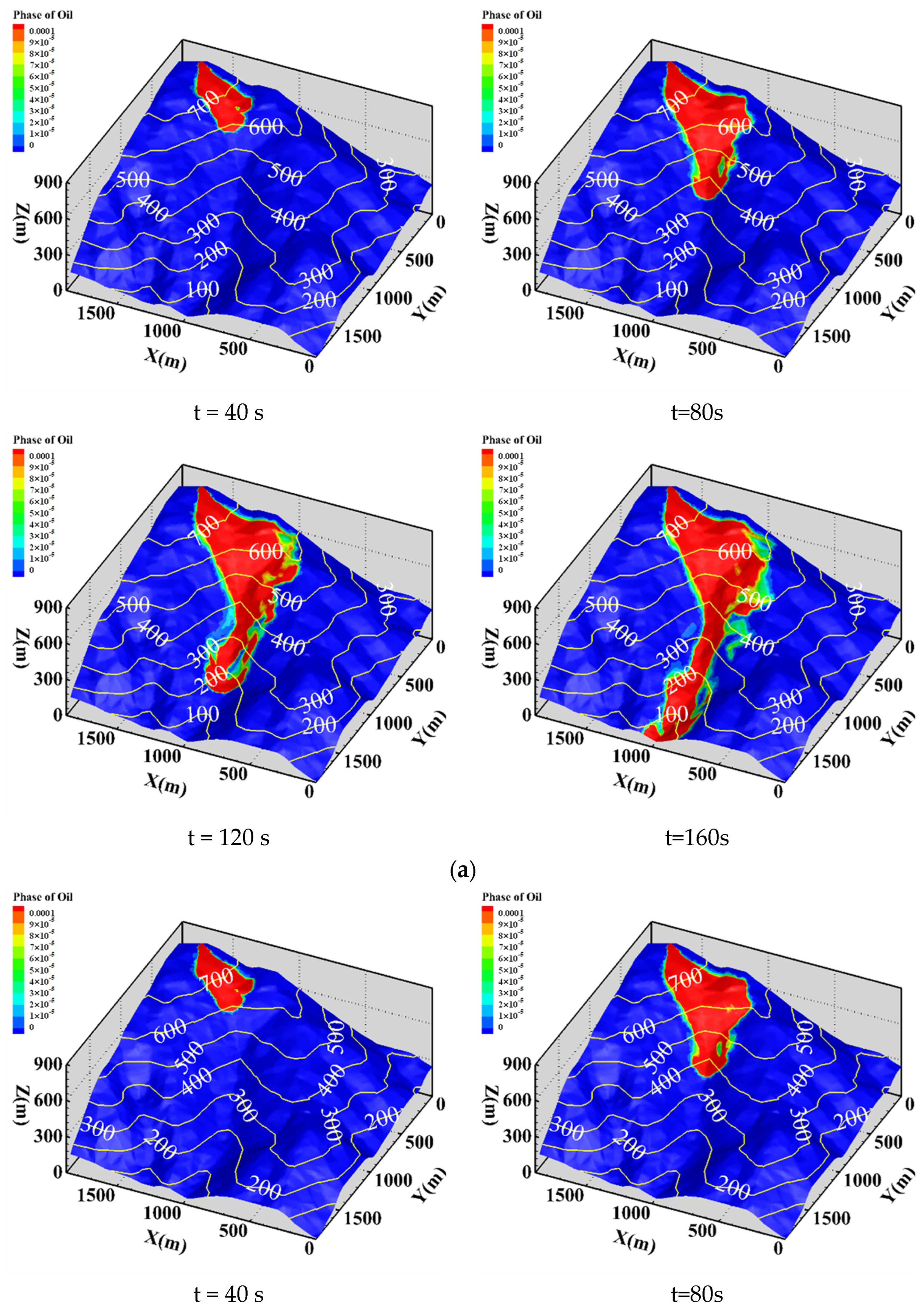

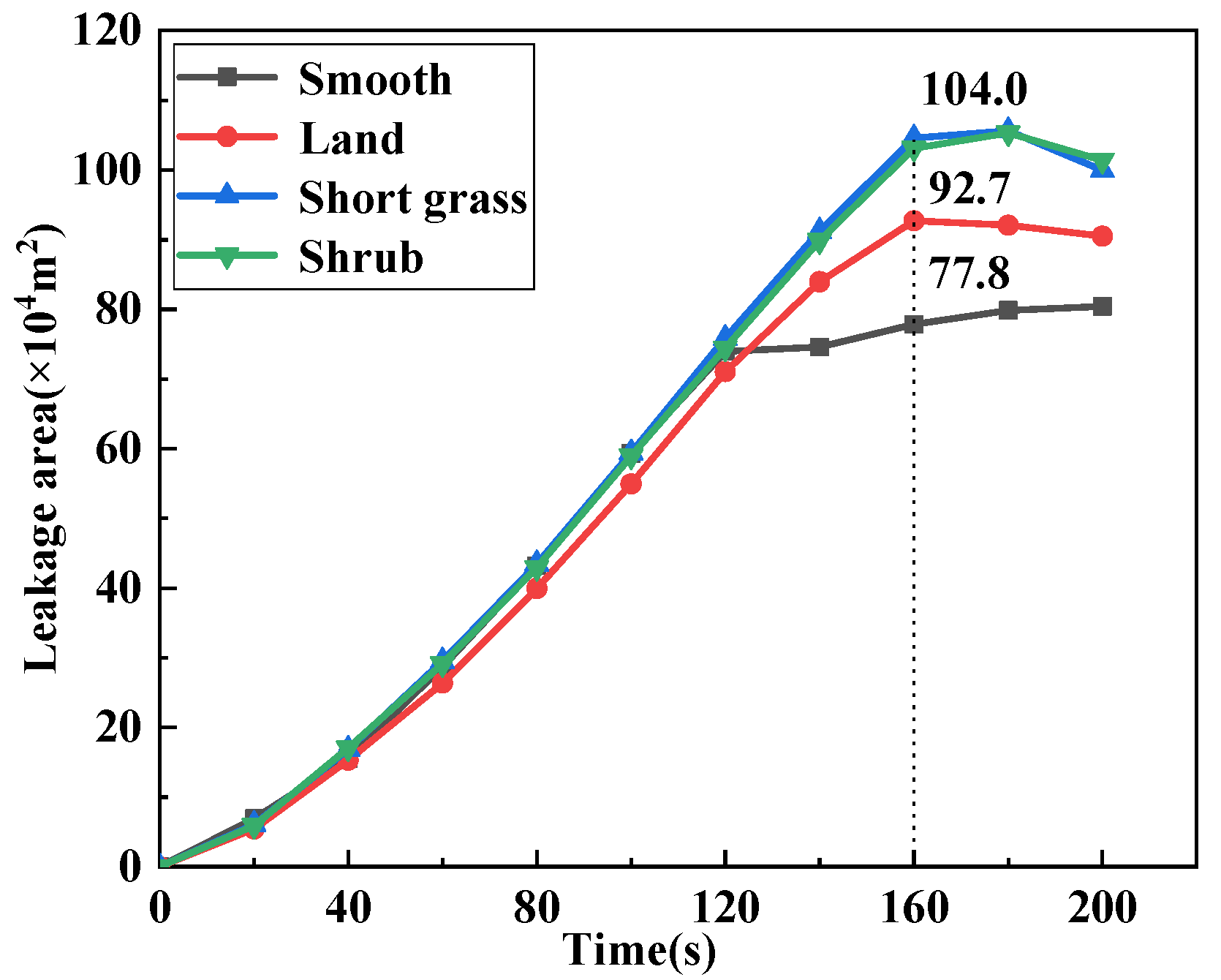
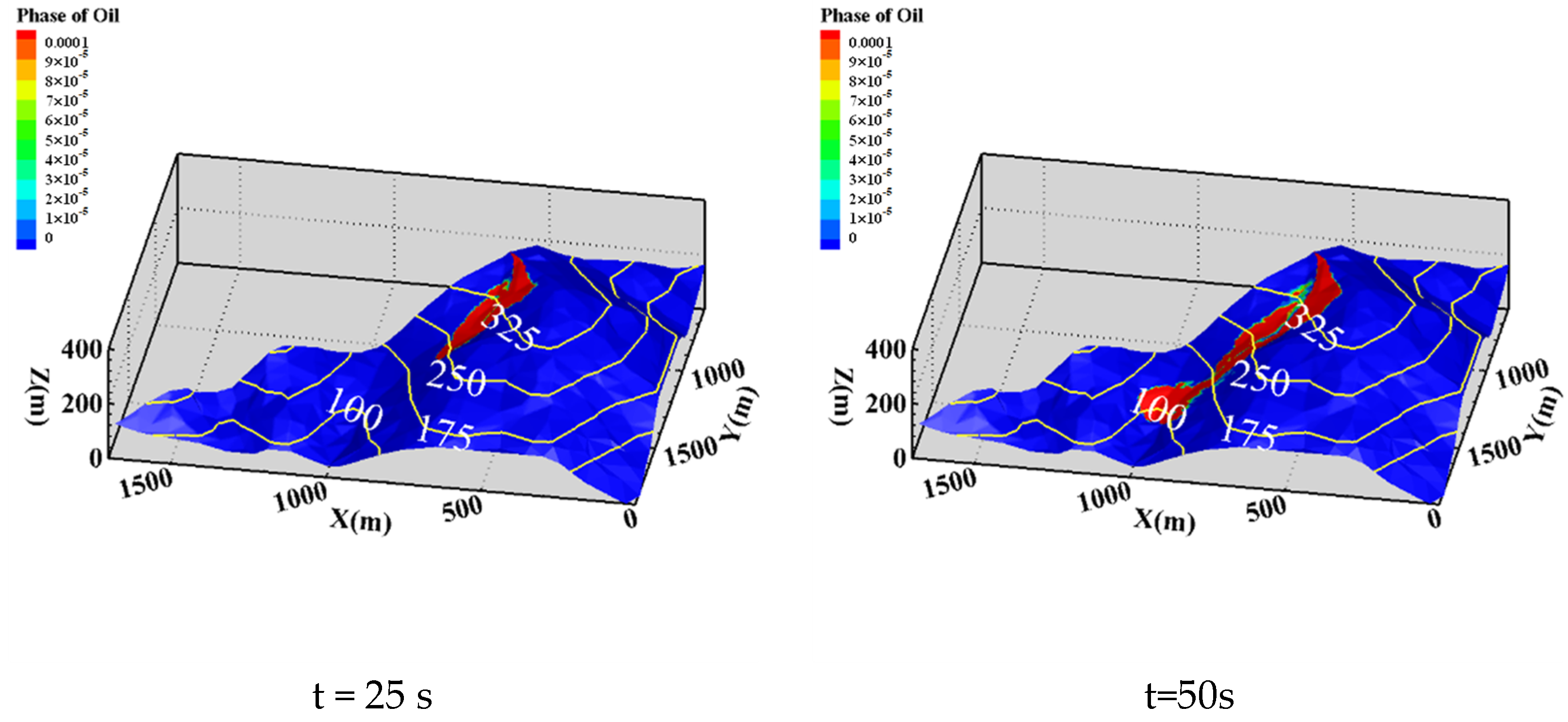

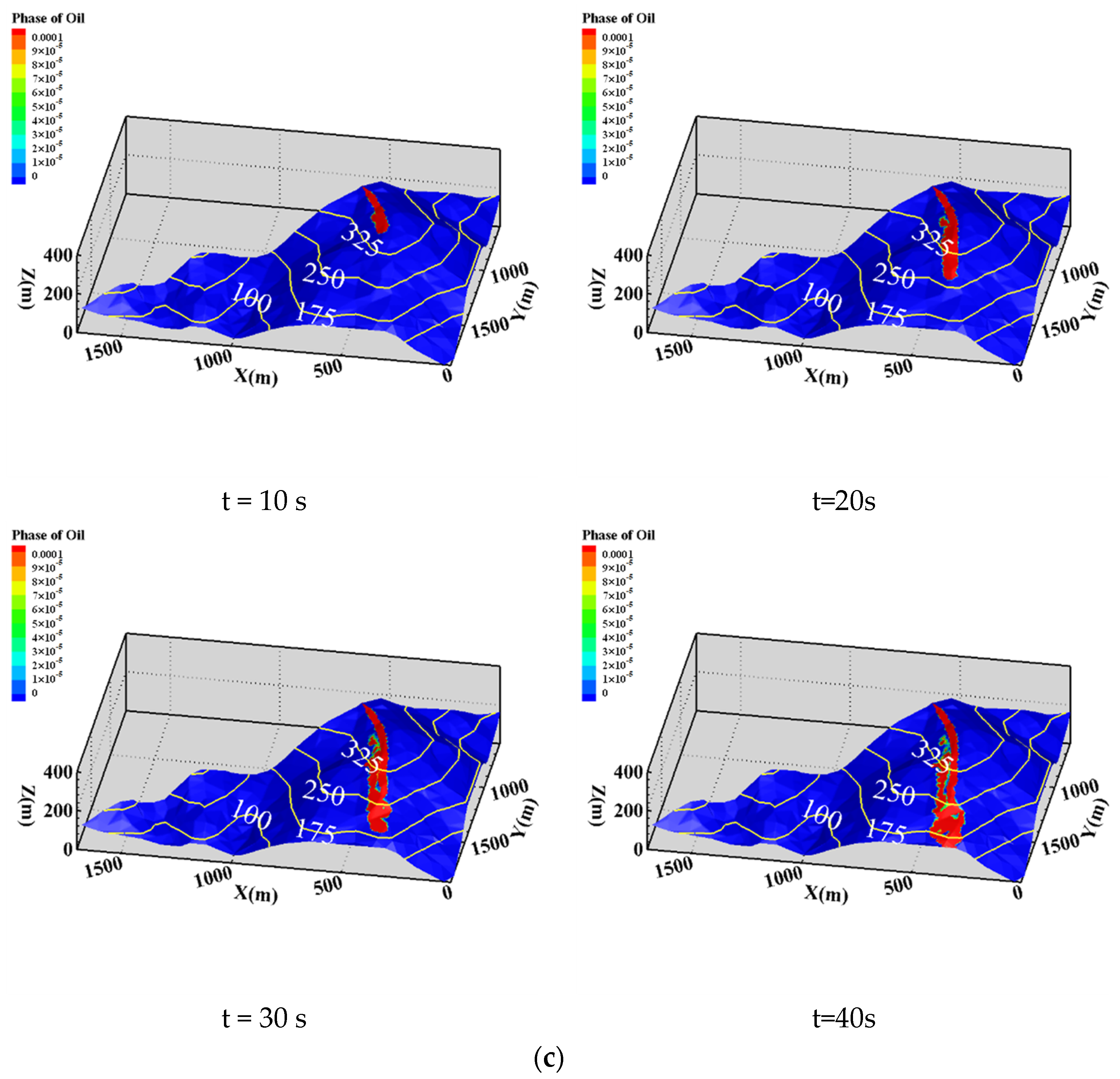
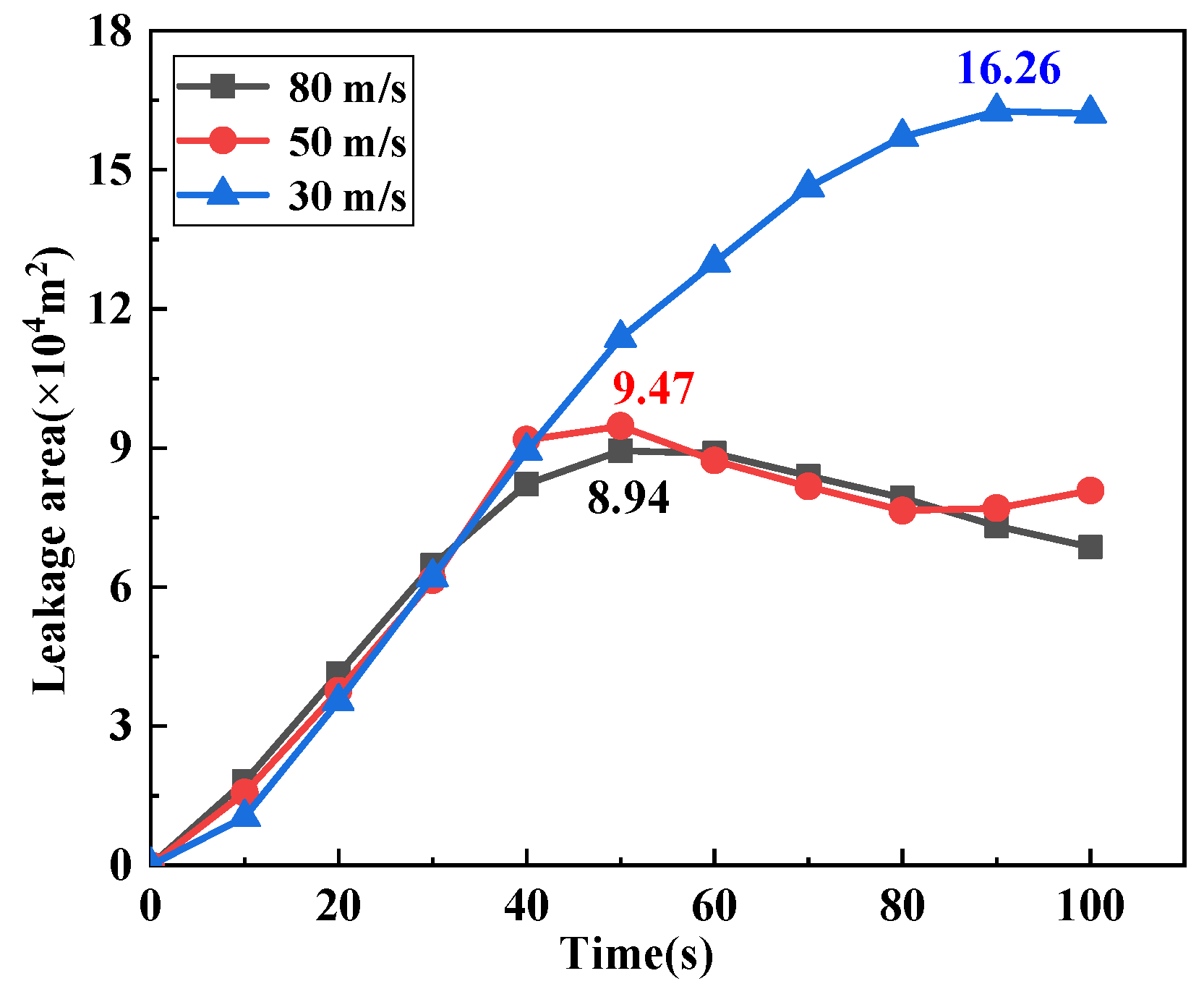
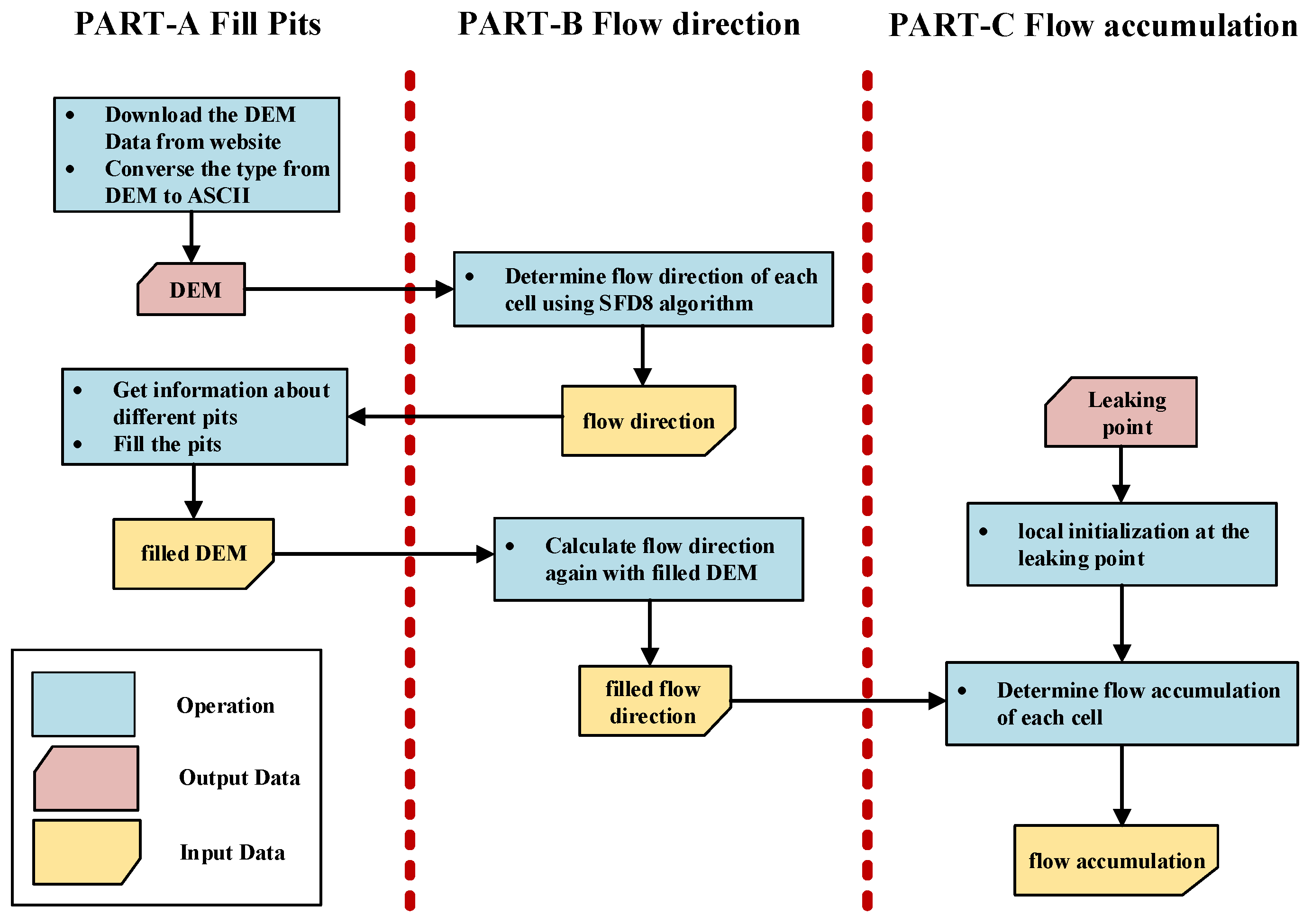

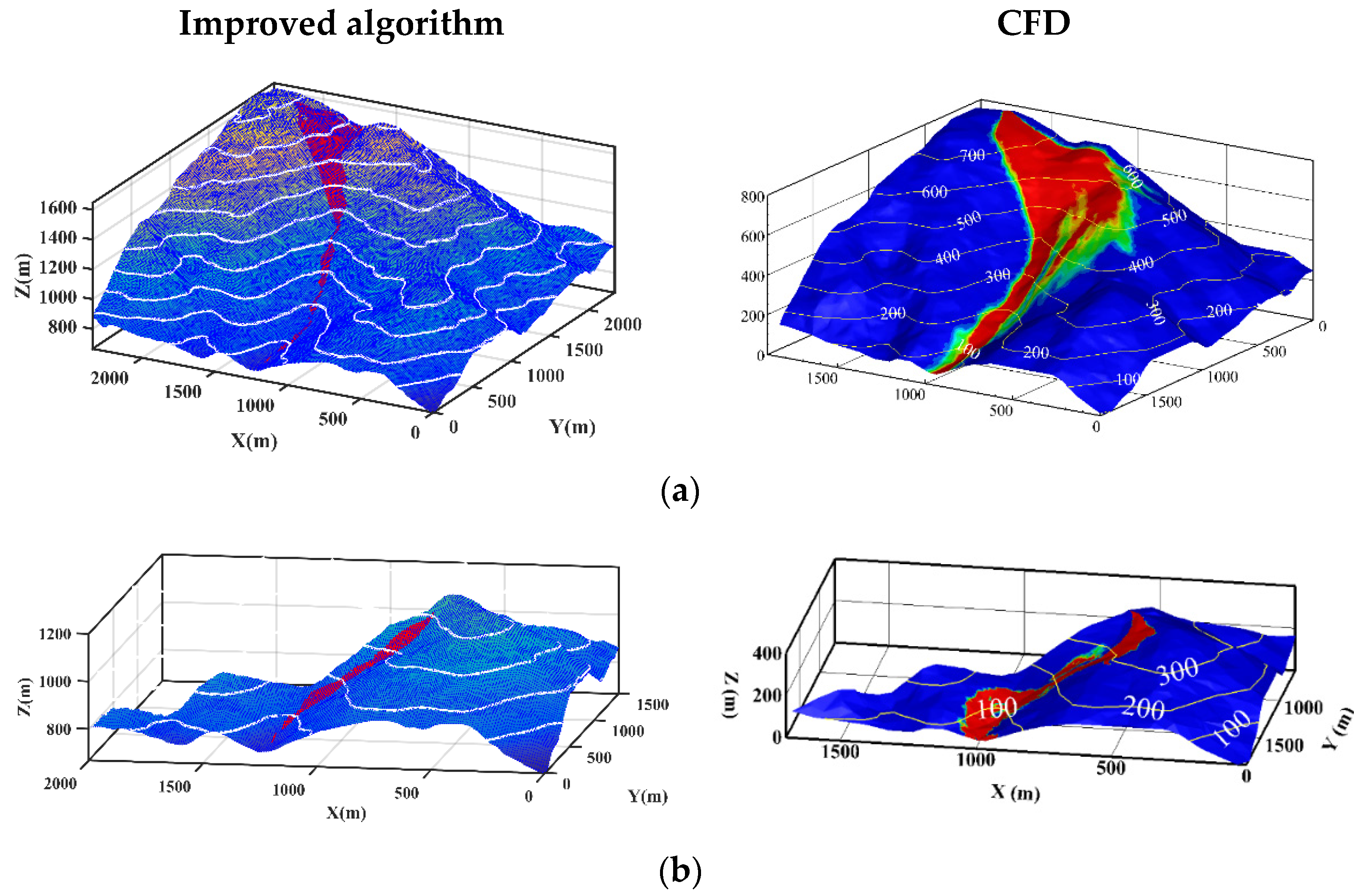
| Surface Type | ||
|---|---|---|
| Smooth land | 0 | 0 |
| Rough land | 0.025 | 0.5 |
| Short grass | 0.1 | 2 |
| Shrub | 0.2 | 4 |
Publisher’s Note: MDPI stays neutral with regard to jurisdictional claims in published maps and institutional affiliations. |
© 2022 by the authors. Licensee MDPI, Basel, Switzerland. This article is an open access article distributed under the terms and conditions of the Creative Commons Attribution (CC BY) license (https://creativecommons.org/licenses/by/4.0/).
Share and Cite
Wang, K.; Peng, J.; Zhao, J.; Hu, B. Analysis of Leaked Crude Oil in a Mountainous Area. Energies 2022, 15, 6568. https://doi.org/10.3390/en15186568
Wang K, Peng J, Zhao J, Hu B. Analysis of Leaked Crude Oil in a Mountainous Area. Energies. 2022; 15(18):6568. https://doi.org/10.3390/en15186568
Chicago/Turabian StyleWang, Ke, Jing Peng, Jue Zhao, and Bing Hu. 2022. "Analysis of Leaked Crude Oil in a Mountainous Area" Energies 15, no. 18: 6568. https://doi.org/10.3390/en15186568
APA StyleWang, K., Peng, J., Zhao, J., & Hu, B. (2022). Analysis of Leaked Crude Oil in a Mountainous Area. Energies, 15(18), 6568. https://doi.org/10.3390/en15186568







